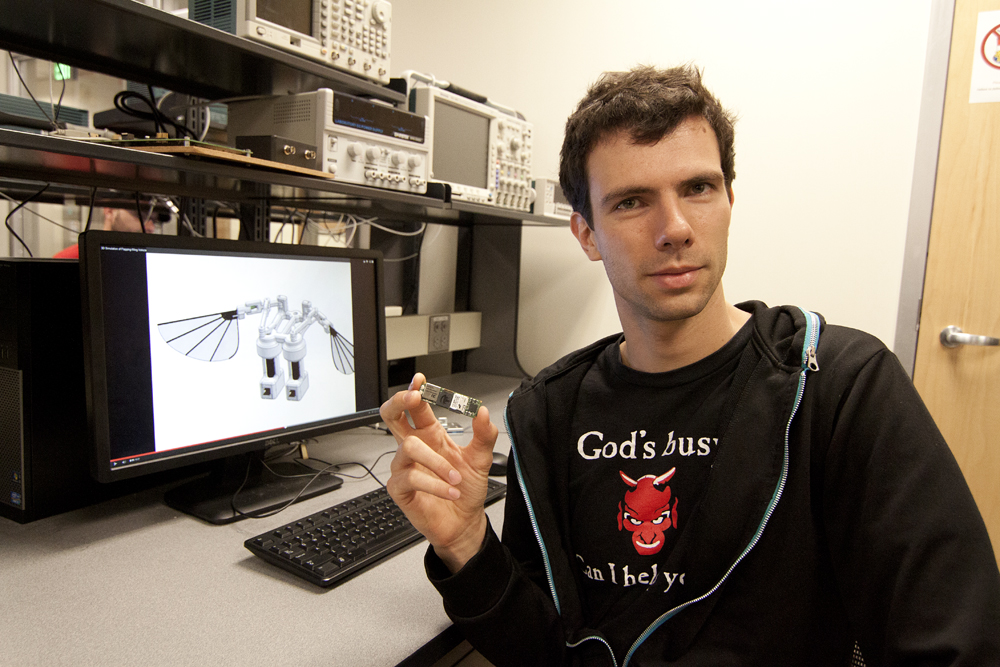It was a dark and stormy night, and lighting tore across the black sky like the seven squiggles of vanilla icing on the top of a Hostess Cup Cake.
Online exclusive: The Freshman 15
It was a dark and stormy night, and lighting tore across the black sky like the seven squiggles of vanilla icing on the top of a Hostess Cup Cake. An average college freshman stepped timidly onto a scale—her eyes locked on the read-out. She had heard the urban legends, but never thought she would face…the Freshman 15!
We all have. And the way it’s talked about, in hushes and whispers, we know it’s something to fear. Just insert a microwave of exploding hot dogs, a smoke-alarm warning that the toaster waffles are done and the sizzle of grease in the background and you’ve got the makings of a trailer for a fabulous horror flick. Except the scary part is that the Freshman 15 is a very real possibility.
Well…sort of.
College students in general don’t gain 15 pounds, but something closer to seven pounds. Depending on the research you look at, this number varies a little. Some reports claim that females are likely to gain more than males; others state the exact opposite. Of course, these are averages, and some college students put on much more weight?upwards of 30 to 50 pounds by the time they graduate.
Don’t panic—this phenomenon is not the doing of some sort of ancient curse or angry dining demon, and can be easily avoided.
The fact is the Freshman 15 is the direct result of a change in eating habits that typically takes place quickly after entering college, as reported in a USA Today article eloquently titled, “College eating habits are clogged with fat.”
Although, it’s not as if most of us don’t know that we indulge ?the problem is that we tend to ignore it as we scarf down pizza, burgers, chips, cakes, cookies, candy and soda. Also, how many alcoholic beverages did you ingest last week? Some of us should be counting how many we had last weekend. A single beer contains anywhere from 99 to 210 of the little boogers we affectionately refer to as calories.
If we know fatty foods are so bad for us, and invokes the Freshman 15 monster, why in the name of a double-shot, whole milk, white chocolate, raspberry mocha with whip (hey, some things are sacred even at approximately 600 calories) do we eat them?
I’ll tell you why: We’re desperate.
We’re desperate for quick and easy food that we don’t have to prepare, and won’t take up precious studying and sleeping, or honestly, clubbing time. How handy the Food Court has become! We’re also desperate to get our sugar, salt, caffeine and monosodium glutamate fixes. Did I forget anything?
Alas, some of you are likely feeling very righteous right about now, believing that you eat healthy because you’re vegetarian, vegan or merely organic. I know I did. Ha! Sorry, that was rude. However, be careful about what you put in your mouth. Not everything we eat is as seems…or even as it should be.
Fat and sugar content is often disguised by space alien-sounding words that disorient and mislead the vitamin-deprived. Also, eating a truly balanced diet can be difficult if you don’t have experience in the art and science of nutrition. People often believe they are eating healthy, but in fact are digesting a huge amount of fat and other unhealthy molecules, and very few vitamins and minerals. The Freshman 15 haunts them.
So how can we perform an exorcism? A few ways: one, read a book or website on nutrition so we have a better understanding of food, supplements and common tricks. Two, read labels so we know what is actually in our food…and, to be blunt, that it is in fact even food. And three, stock up on healthy snacks like yogurt, fruit, vegetables and whole-grain items. These are rarely available in vending machines or mini-marts, so we have to be pre-armed to do battle when hunger or the munchies strike.
The Freshman 15 is a realistic possibility. However, with a little forethought and planning, eating doesn’t have to be a nightmare.



